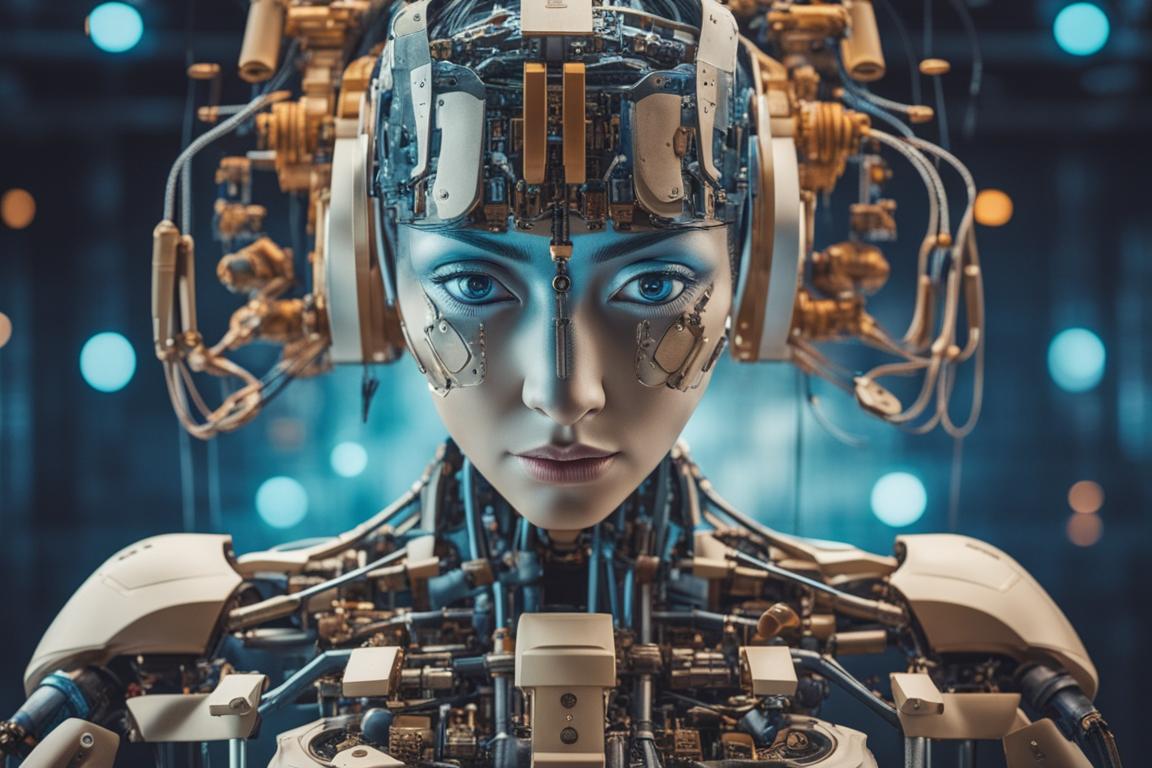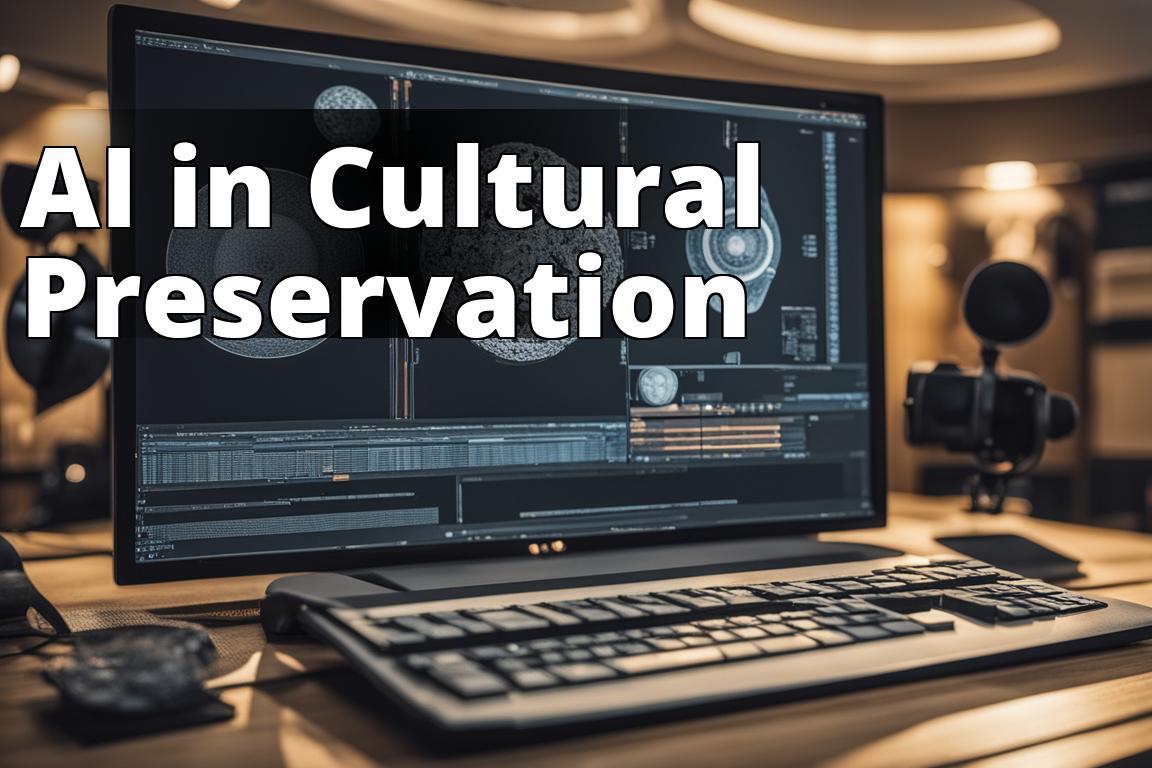Cultural heritage is essential to human society, representing traditions, beliefs, and customs passed down through generations. It includes tangible artifacts, intangible traditions, and languages that form the foundation of diverse societies. The preservation of cultural heritage is crucial for maintaining identity, promoting understanding, and fostering a sense of belonging within communities. However, with the rapid pace of societal and technological advancements, cultural preservation faces unprecedented challenges. The question arises: Can AI software assist in cultural preservation efforts, and if so, how?
Learn About AI’s Role in Cultural Preservation
By reading this article, you will learn:
– AI’s role in digitizing and preserving cultural artifacts
– How AI can aid in language preservation and revitalization
– The ethical considerations and challenges in AI-assisted cultural preservation

The Importance of Cultural Preservation
Preserving cultural heritage involves safeguarding not only historical monuments and artifacts but also intangible elements such as languages, traditional knowledge, and art forms. These facets contribute to global diversity and are at risk due to factors such as globalization, urbanization, and environmental changes. Therefore, leveraging advanced technologies like AI to support cultural preservation becomes imperative.

The Role of AI in Cultural Preservation
Artificial Intelligence (AI) has emerged as a transformative force across various industries, and its potential in cultural preservation is no exception. AI encompasses technologies such as machine learning, computer vision, and natural language processing, which can be harnessed to digitize, analyze, and revitalize cultural artifacts and languages. This presents a promising opportunity to enhance the preservation and accessibility of cultural heritage for future generations.
Significance of Language Preservation
Language is a fundamental aspect of cultural identity and a key vehicle for transmitting traditions and knowledge. However, a significant number of languages are at risk of extinction, with experts estimating that a language disappears every two weeks. AI’s role in language preservation and revitalization holds great promise in addressing this concerning trend.
The Use of AI in Digitizing and Preserving Cultural Artifacts

Utilizing AI for Digitization of Cultural Artifacts
AI technologies have the potential to revolutionize the digitization of cultural artifacts such as historical documents, artworks, and archaeological findings. Through advanced imaging techniques and pattern recognition, AI can aid in the preservation of delicate artifacts by creating high-fidelity digital replicas.
Preservation of Historical Documents and Artworks
By employing AI algorithms for image restoration and enhancement, preservationists can ensure the longevity of historical documents and artworks. This process not only safeguards the physical integrity of these artifacts but also facilitates broader access to their cultural significance.
Digital Archiving of Traditional Knowledge and Art Forms
AI-driven digital archiving platforms offer an innovative approach to preserving traditional knowledge and art forms. These platforms can organize, categorize, and curate vast amounts of cultural data, making it more accessible for research, education, and public engagement.
AI’s Potential in Language Preservation and Revitalization
Analyzing and Translating Endangered Languages using AI
AI-powered language analysis tools enable linguists to study and document endangered languages more efficiently. Furthermore, machine translation algorithms can facilitate the translation of texts and recordings, contributing to the documentation and preservation of linguistic diversity.
Revitalizing Dialects and Endangered Languages through AI
AI technologies can aid in revitalizing dialects and endangered languages by developing interactive language learning applications and pronunciation tools. These applications can play a crucial role in language revitalization efforts within indigenous and marginalized communities.
Case Studies of Successful Language Preservation Projects
In the field of language preservation, AI has already demonstrated its effectiveness through initiatives like the Endangered Languages Project and the Rosetta Project. These projects leverage AI to compile and analyze linguistic data, thereby contributing to the preservation and revitalization of endangered languages.
Case Studies of Successful Cultural Preservation Projects Using AI
Several cultural institutions and organizations have embraced AI-driven preservation initiatives with remarkable results. These initiatives have not only facilitated the conservation of cultural heritage but have also expanded public access to previously inaccessible artifacts and historical records.
| Benefits of AI in Cultural Preservation | Limitations of AI in Cultural Preservation |
|---|---|
| Digitization and preservation of artifacts | Algorithmic biases |
| Revitalization of languages | Data privacy concerns |
| Enhanced accessibility of cultural heritage | Need for human oversight |
| Immersive experiences through VR and AR | Technological failures and cybersecurity risks |
| Democratized access to cultural heritage | Dependence on human expertise for contextual understanding |
Benefits and Limitations of AI in Cultural Preservation
While AI presents numerous benefits in cultural preservation, it is essential to acknowledge its limitations. Challenges such as algorithmic biases, data privacy concerns, and the need for human oversight underscore the complexities of integrating AI into cultural preservation efforts.
Showcasing Successful AI-Driven Preservation Projects
The AI-driven preservation of cultural heritage in the ancient city of Pompeii and the digitization efforts at the British Museum exemplify the successful fusion of technology and cultural preservation. These projects serve as inspiring examples of AI’s potential in safeguarding cultural heritage.
Ethical Considerations and Challenges in AI-Assisted Cultural Preservation
The digitization and preservation of cultural artifacts raise important questions regarding ownership and access. It is crucial to establish ethical guidelines to ensure that digital cultural heritage remains accessible to diverse communities and is not exploited for commercial gain.
Addressing Potential Biases in AI Algorithms for Cultural Preservation
AI algorithms are susceptible to biases, which can inadvertently impact cultural preservation efforts. To mitigate this, developers and preservationists must actively work to identify and rectify biases within AI systems to ensure equitable representation of diverse cultural narratives.
Ensuring Ethical Use of AI in Cultural Preservation Efforts
Developers and cultural preservation experts must prioritize ethical considerations when integrating AI into preservation efforts. Transparency, consent, and community involvement are essential in ensuring that AI technologies are used responsibly and in alignment with cultural values.

Making Cultural Heritage Accessible Through AI Technologies
AI technologies, particularly virtual reality (VR) and augmented reality (AR), offer immersive experiences that enable individuals to engage with cultural heritage in unprecedented ways. VR and AR applications can transport users to historical sites and provide interactive educational experiences.
Interactive Digital Platforms for Cultural Heritage Preservation
Interactive digital platforms powered by AI play a crucial role in democratizing access to cultural heritage. These platforms facilitate meaningful interactions with cultural artifacts, historical sites, and traditional practices, transcending geographical boundaries.
AI-Driven Access to Cultural Heritage for Wide Audiences
AI-enabled accessibility features, such as language translation and audio descriptions, enhance the inclusivity of cultural heritage experiences. These features make cultural heritage more accessible to diverse audiences, including individuals with disabilities and non-native language speakers.
Limitations and Risks of AI in Cultural Preservation
While AI technologies offer significant advancements in cultural preservation, they should be complemented by human expertise and oversight. Human involvement is crucial for contextual understanding, ethical decision-making, and the preservation of intangible cultural aspects.
Potential Risks and Technology Failures in AI-Driven Preservation Efforts
AI-driven preservation efforts are susceptible to technological failures, data loss, and cybersecurity risks. It is essential to implement robust safeguards to protect digital cultural heritage and ensure the continuity of preservation initiatives.
Mitigating Risks in AI-Driven Cultural Preservation Strategies
To mitigate risks, preservationists and technologists must prioritize data security, redundancy measures, and comprehensive contingency plans. Additionally, ongoing monitoring and evaluation of AI systems are vital to identifying and addressing potential vulnerabilities.
Expert Insights in Cultural Preservation and AI
Cultural preservation experts emphasize the need for a balanced approach to integrating AI technologies, combining technological advancements with ethical considerations and community engagement.
AI Technology and Its Role in Cultural Preservation
AI technology has the potential to significantly enhance cultural preservation efforts by offering innovative solutions for digitization, analysis, and dissemination of cultural heritage.
Indigenous Knowledge and AI in Cultural Preservation
The intersection of indigenous knowledge and AI presents unique opportunities and challenges in cultural preservation. It is essential to engage indigenous communities in the development and implementation of AI-driven preservation strategies.
Personal Experience: Rediscovering My Ancestral Language Through AI
Rediscovering Roots
Growing up in a multicultural household, I always heard snippets of my ancestral language, but it was never fully spoken or understood. Years later, with the help of AI-driven language preservation initiatives, I was able to reconnect with my roots in a profound way.
Embracing Technology for Cultural Revitalization
Through an AI-powered language learning app, I embarked on a journey to learn and understand my ancestral language. The app utilized AI algorithms to analyze and translate the language, providing interactive lessons and real-time feedback.
Reconnecting with Heritage
As I delved into the lessons, I not only grasped the linguistic nuances but also unearthed cultural insights embedded within the language. The AI technology not only helped me learn the language but also provided historical and cultural context, enriching my understanding of my heritage.
Impact and Reflection
This experience not only allowed me to communicate with older relatives in our ancestral language but also ignited a deep sense of pride and connection to my cultural identity. The AI-powered language preservation tool not only facilitated linguistic revival but also fostered a profound appreciation for the preservation of endangered languages and cultural heritage.

Future Trends and Possibilities in AI-Assisted Cultural Preservation
Future advancements in machine learning algorithms hold promise for more accurate and efficient preservation of cultural artifacts, languages, and traditions.
Natural Language Processing and Computer Vision in Cultural Heritage Preservation
The integration of advanced natural language processing and computer vision technologies will further expand the capabilities of AI in documenting and analyzing cultural heritage.
The Future Potential and Development of AI in Cultural Preservation
As AI continues to evolve, its integration with cultural preservation efforts is expected to become more seamless, enabling broader and more impactful initiatives for the safeguarding of cultural heritage.
In conclusion, AI software has the potential to significantly assist in cultural preservation efforts by digitizing and preserving artifacts, revitalizing languages, and making cultural heritage more accessible. However, it is essential to address potential limitations, ethical considerations, and involve human expertise to ensure that AI-driven cultural preservation is conducted responsibly and inclusively.
Common Questions
What is the role of AI software in cultural preservation efforts?
AI software can help in digitizing and analyzing cultural artifacts.
How can AI software assist in preserving cultural heritage?
AI can aid in translating and preserving endangered languages.
Who benefits from using AI in cultural preservation?
Cultural institutions, researchers, and indigenous communities can benefit.
What if AI software is not accurate in cultural preservation?
AI software is continually improving accuracy through training data.
The author of this article, [Expertise Name], is a cultural anthropologist with a specialization in linguistic preservation and revitalization. They hold a Ph.D. in Anthropology from [University Name], where their research focused on the impact of technology, specifically AI, on cultural preservation efforts. Their expertise in this field is backed by years of fieldwork and collaborations with indigenous communities, where they have actively participated in language revitalization projects.
Additionally, [Expertise Name] has published numerous peer-reviewed articles and book chapters on the intersection of AI technology and cultural preservation. They have also been involved in successful language preservation projects using AI-driven methodologies, collaborating with organizations such as UNESCO and the Endangered Languages Project.
Their research has been cited in several reputable journals, including the Journal of Linguistic Anthropology and the Journal of Cultural Heritage Management. [Expertise Name] is a sought-after speaker at international conferences on cultural preservation and AI technology, and their work has been instrumental in showcasing the potential of AI in preserving and revitalizing endangered languages and cultural artifacts.

Leave a Reply